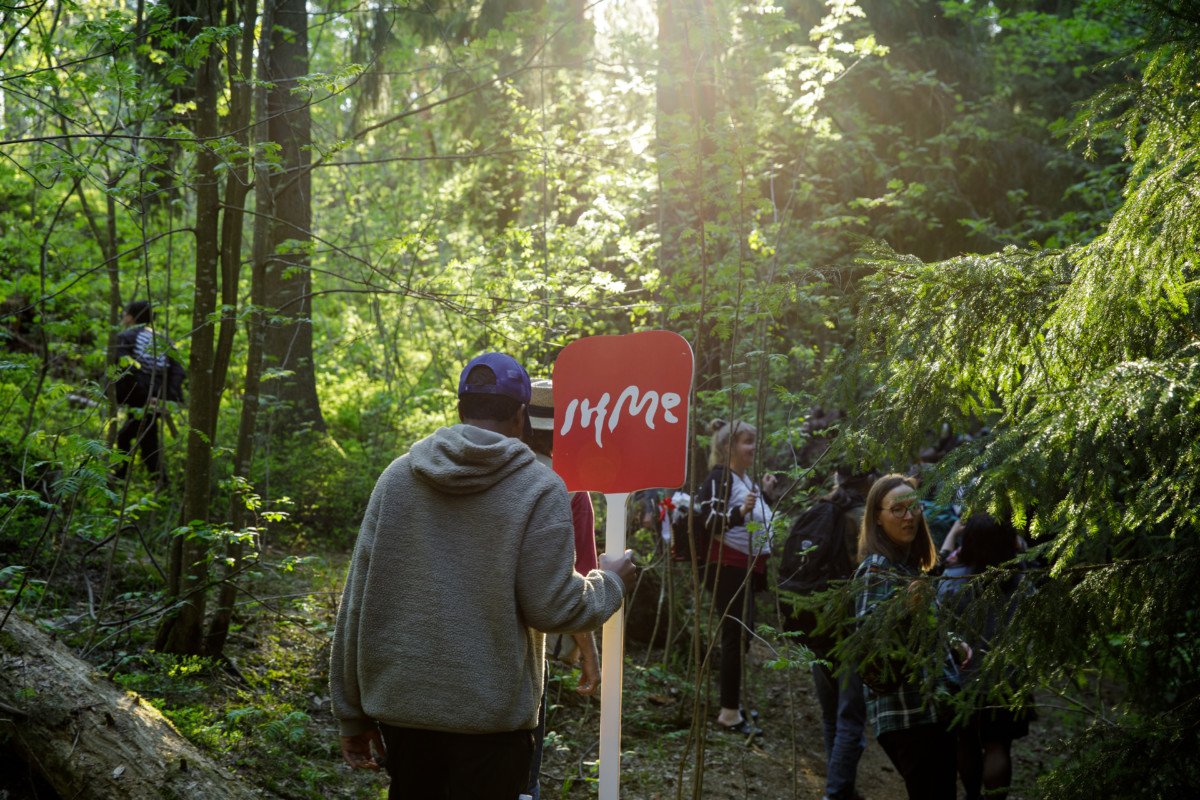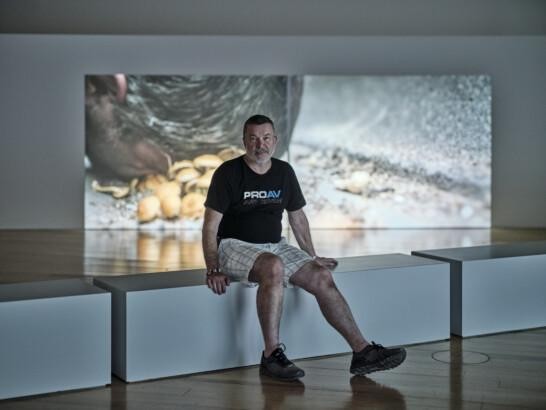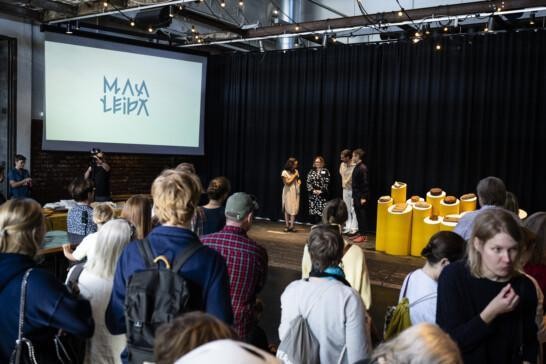Ecoblog
Can we measure the environmental handprint of art?

Along with environmental footprints, environmental handprints are mentioned increasingly frequently. While our footprint talks about the negative effects of our actions, our handprint describes the transformative power of those actions and their positive impact on others.
Both metrics help us to visualize the scale of the necessary changes, to allocate resources to the most effective measures, and to break down vague environmental anxiety into concrete, practical action. At best, they are tools that support the transition to more sustainable practices.
What is an environmental handprint?
The Technical Research Centre of Finland (VTT) and LUT University have published guidelines for evaluating carbon and environmental handprints. An environmental handprint is a broader measure than a carbon handprint, and it goes beyond climate change to other environmental impacts, such as on natural resources, water, nutrients, and air quality.
According to its definition, a handprint refers to the beneficial environmental impacts that organizations can achieve by offering products and services that reduce the footprint of others. “Others” here refers to users of the product or service, or other stakeholders. To make the calculation, we need to know a product or service’s emissions, both in the final situation where it is used and in the initial baseline situation, i.e. in the absence of the product or service. The handprint is the difference between these two emission figures.
Can we measure the positive environmental impacts of art?
Evaluation of the environmental impacts of artworks has prompted concerns about whether we are at the same time judging the value of the artworks themselves. Personally, I see footprint and handprint calculations as a production tool, like a Euro-based budget, that helps us navigate the world of existing realities.
In the same way that artworks are designed for a specific physical space, they should also be adapted to the global limitations set by social and ecological crises. You can read more about the thoughts and experiences evoked by an artwork, as well as the power of an art institution to regenerate culture, elsewhere on IHME’s website.
The guidelines designed for products and services may not necessarily be suited to examining the positive environmental effects of art. For a handprint evaluation, it is namely necessary to define the scope and baseline of the study, as well as the beneficiaries, whose footprint is reduced thanks to the use of a product. In the case of a work of art this is not necessarily clear-cut.
Carbon handprint of an art production
If we take separately the production process and the artwork itself, it is quite easy to gauge the environmental handprint of an art production. For example, the producer of an exhibition can influence the emissions of a venue renter, goods supplier, or transport company.
But it is important to know the difference between a footprint and a handprint: If I rent small, low-emission venue A instead of huge, coal-heated venue B, I reduce my own carbon footprint, but if I get venue B to lower the winter temperature of its premises, I reduce venue B’s carbon footprint, and I can count this emission reduction in my own carbon handprint. If I choose an electric taxi instead of a diesel taxi, my own carbon footprint will decrease, but if the taxi company replaces one diesel car with an electric one due to my continually booking electric taxis, their total carbon footprint will decrease, and my own carbon handprint will increase.
Carbon handprint of an artwork
The carbon handprint generated by an artwork is an interesting question. Sometimes, the effect on the audience can be groundbreaking: someone can see a work of art and give up eating meat or driving a car. Usually, however, art has a more subtle impact and acts via longer chains of influence.
This brings us to the question of the baseline scenario: Is someone’s baseline their entire lifestyle, from living and moving around to eating and other forms of consumption? Or is it simply what they would be doing if they weren’t looking at the work of art?
Sources of footprints and handprints
The following contains figures for and reflections on the carbon footprint and carbon handprint of an artwork. At IHME, instead of the wider environmental footprint, we have only monitored our carbon footprint, focusing on climate emissions, because we have seen this as sufficient for our resources; generally, reducing our carbon footprint leads to a reduction in consumption, which in turn leads to a reduction in all sorts of environmental loads.
Carbon footprint of IHME Helsinki Commission 2023
From the emissions viewpoint the IHME Helsinki commissioned artwork for 2023, Hiwa K’s Chicago Boys – While We Were Singing, They Were Dreaming, was a series of band practices, with shared meals, held in different places. The artwork’s carbon footprint was 7100 kg CO2e.
As in previous years, most of the climate impact (94%) was related to travel: 74% of the emissions came from air travel, 8% from car journeys, and 11% from accommodation. There were small emissions from food (4%) and the energy consumed by venues (1%). Everything else, such as printed products and waste, made up the last 1 percent of emissions. The calculation was done with the Carbon smart project’s (Hiilifiksu järjestö) calculator.
Handprint greater than the footprint?
Could the carbon handprint of an artwork be greater than its emissions? This is where the challenges of definition and demarcation mentioned above come into play. Collecting information voluntarily from people participating in an art event in their free time can also be difficult to justify. Nevertheless, the following are examples of possible ways of gauging a carbon handprint and its size.
When people gather together, it can have surprising positive results, even some that can be measured in terms of electricity consumption or carbon dioxide emissions. For example, the Valon polku (Path of Light) event was held in Turku in winter 2022 at the same time as Finns were being urged to save electricity.
But the event’s publicity material noted that, if each visitor turned off a small 10-watt lamp at home while visiting the event, it would be enough to compensate for the event’s electricity consumption. If this had been taken further, switching off two 10-watt lamps would have led to electricity savings!
Vacuuming for 15 minutes alone or an evening with the band?
Electricity was also used in Chicago Boys. We measured the electricity consumption of the electronic sound system during a band rehearsal and found that 0.256 watts of electricity was consumed in three hours. Approximately the same amount of electricity is consumed by vacuuming for 15 minutes or boiling three litres of water, but it feels different to vacuum alone than to attend a band rehearsal!
From the point of view of the carbon handprint, however, the emissions from electricity production is so small that, even if you turn off all the lights at home as well as the vacuum cleaner, the unused electricity does not result in many kilos of carbon handprint.
A bigger emission reduction and carbon handprint can be achieved if vegetarian food is served at an art event. Vegan food was served at all Chicago Boys sessions, a total of 235 portions. If the participants skipped a meal containing animal products at home, the carbon handprint of the meals could be up to 500 kg CO2e. And if communal dining inspired visitors to try vegetarian food at home, the effects would be multiplied.
Based on this, an artwork’s carbon handprint does not, at least immediately, reach the level of its footprint. These handprint observations support the idea of a future shared local culture, in which the space, energy consumption and goods at home are reduced, and we go out together to eat and experience culture.
George Monbiot has summarized this as “private moderation, public luxury”. Perhaps it is appropriate to end with this idea, as Chicago Boys criticized the neoliberal policy of grabbing common urban spaces for private commercial use.
Information is a tool for transformation
The structures and operating models for the production of art and culture can be gradually developed by refining and honing operating models, first in our own organization, then through joint agreements across the entire industry. This change can be planned and managed. On top of this come the butterfly effects of art: say, a piece of art sparks an idea in the mind of only one person, but that one person then takes action that changes the whole society. The effect cannot be predicted.
Handprint calculations are suited to clear situations that involve easily analysed variables. The long timespan of an artwork’s effects and the emphasis on abstract thought structures make it difficult to assess the impact of a single artwork on the behaviour of an individual viewer.
Still, when face to face with art, we can experience something that can expand from our personal life into a wider social transformation. Information, whether quantitative or qualitative, can be a tool for comprehensive change, and thus wise use of the information gained from calculations and verbal feedback can open up prospects for a new future.
Saara Korpela
Eco coordinator
References:


